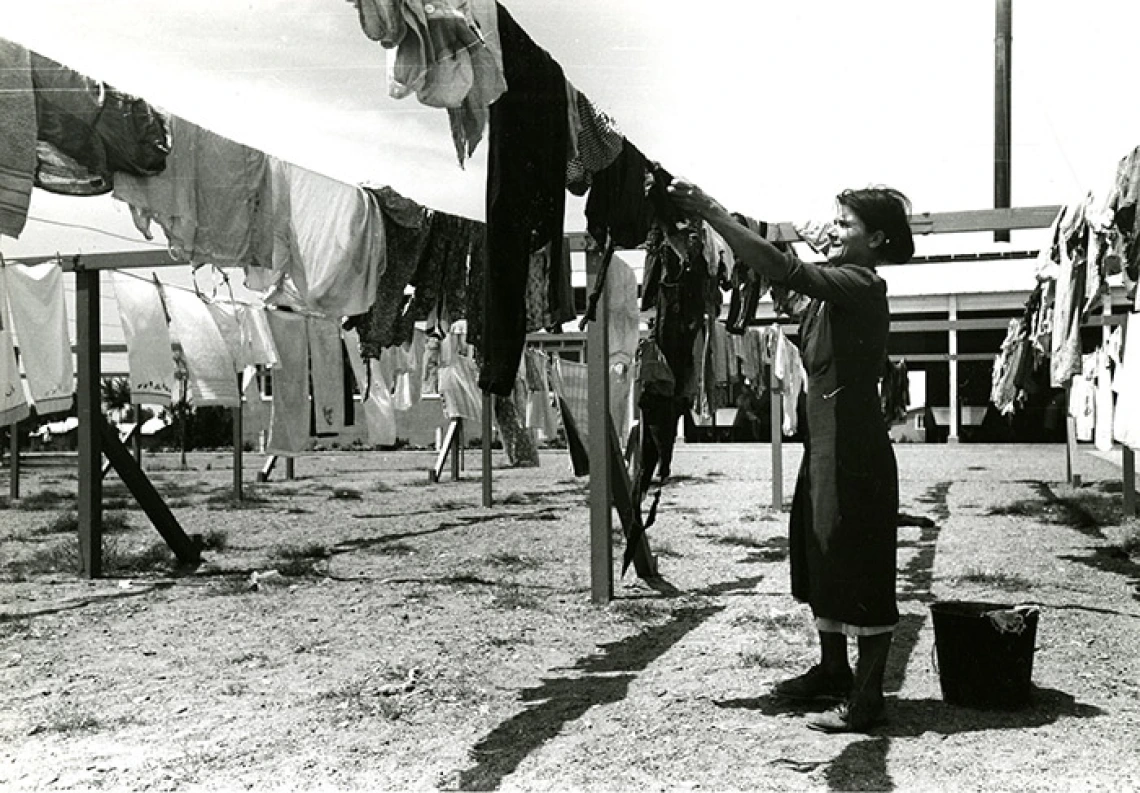Russell Lee photograph collection

Collection area: Political Affairs
Collection dates: 1938-1942
The majority of the photographs in this collection were taken at a time when Russell Lee was actively photographing for the FSA. The photographs in this collection cover three projects in Arizona that are typical of those supported by the FSA. They include both indoor and outdoor prints, and portray the goals of FSA to capture everyday reality. The projects are: Agua Fria Migratory Farm Workers Camp; the Arizona Part-Time Farms, Chandler Unit, Maricopa County; and Casa Grande Valley Farms, Pinal County. All of the Lee photographs are dated 1940, with the exception of a print not belonging to the above sets, from Cairns General Hospital, and dated 1942; the Albee prints are dated 1942, the Lange print, 1938, and the unattributed print is also dated 1942.
There are 17 prints in the Agua Fria Migratory Farm Workers Camp set, of varying sizes. They cover official displays of the camp itself to more detailed pictures illustrating aspects of life in the camp, including everyday chores, health facilities, school lunch, and recreational activities.
The Arizona Part-Time Farms, Chandler Unit set has 3 prints. They include two scenes of a building, and one portrait of a member of the unit.
The Casa Grande set is the largest of the three, comprised of 46 prints of varying sizes. The first prints cover the industry of the farm-dairy cattle and hog farming-and these are followed by prints of the camp, children in school, camp officials, examples of a house and other buildings, including the library.
The collection is arranged according to size in two boxes, and within each box according to set. The four prints taken by other photographers are grouped together in one folder.
A detailed list of the photographs in this collection is available in the paper copy of this guide at the University of Arizona Special Collections Reading Room.
Russell Lee was born in Ottawa, Illinois on 21 July 1903. His childhood, although of comfortable middle-class rural American heritage, was marred by tragedy. His parents were divorced in 1908, when Lee was five, and his mother was killed in an accident in 1913. Lee was then passed between various relatives and guardians until he returned to Ottawa to be raised by family friends. He became interested in photography in 1931 while married to his first wife, artist Doris Emmrick. She introduced him to art, which he then took up seriously. Dissatisfied with his artistic accomplishments, however, Lee bought himself a camera and began taking pictures. During the early 1930s he took photographs of the destitute and homeless, and of the artistic community in Woodstock, New York, where he lived.
Lee pioneered the "photo essay" approach to photography, producing photographic documentaries. In 1936, he joined Roy Stryker's Resettlement Administration Project, which became the Farm Security Administration (FSA) in 1937. The Project's directive was to use photography to create a social awareness of America's rural problems during the depression years. During this time he traveled away from home for up to nine months at a time, photographing and documenting rural America. He and Doris Emmrick were amicably divorced, and Lee later married Jean Smith, who became his partner.
On behalf of the FSA, Lee traveled to Texas, New Mexico, California, and Arizona. His most famous portrayals are of people pursuing their everyday lives in San Augustine, Texas (1939) and Pie Town, New Mexico (1940). He was a pioneer in the use of flash for indoor photography, capturing indoor images as well as the more usual outdoor scenes.
During World War II, Lee photographed airstrips for the U.S. Air Transport Command in the Far East, but did not remain in the service once the war ended. He spent some time documenting the living and working conditions of coal miners for the Interior Department between 1946 and 1947, and then took on industrial assignments. In 1965, Lee began a new career as an educator in the Department of Art at the University of Texas at Austin. He died on 28 August 1986 in Texas.
A collection guide explains what's in a collection. New to using our collections? Learn how to use a collection guide.
Collection guideAccess this collection
Visit us in person to access materials from this collection. Our materials are one-of-a-kind and require special care, so they can’t be checked out or taken home.
How to cite
Learn how to cite and use materials from Special Collections in your research.
